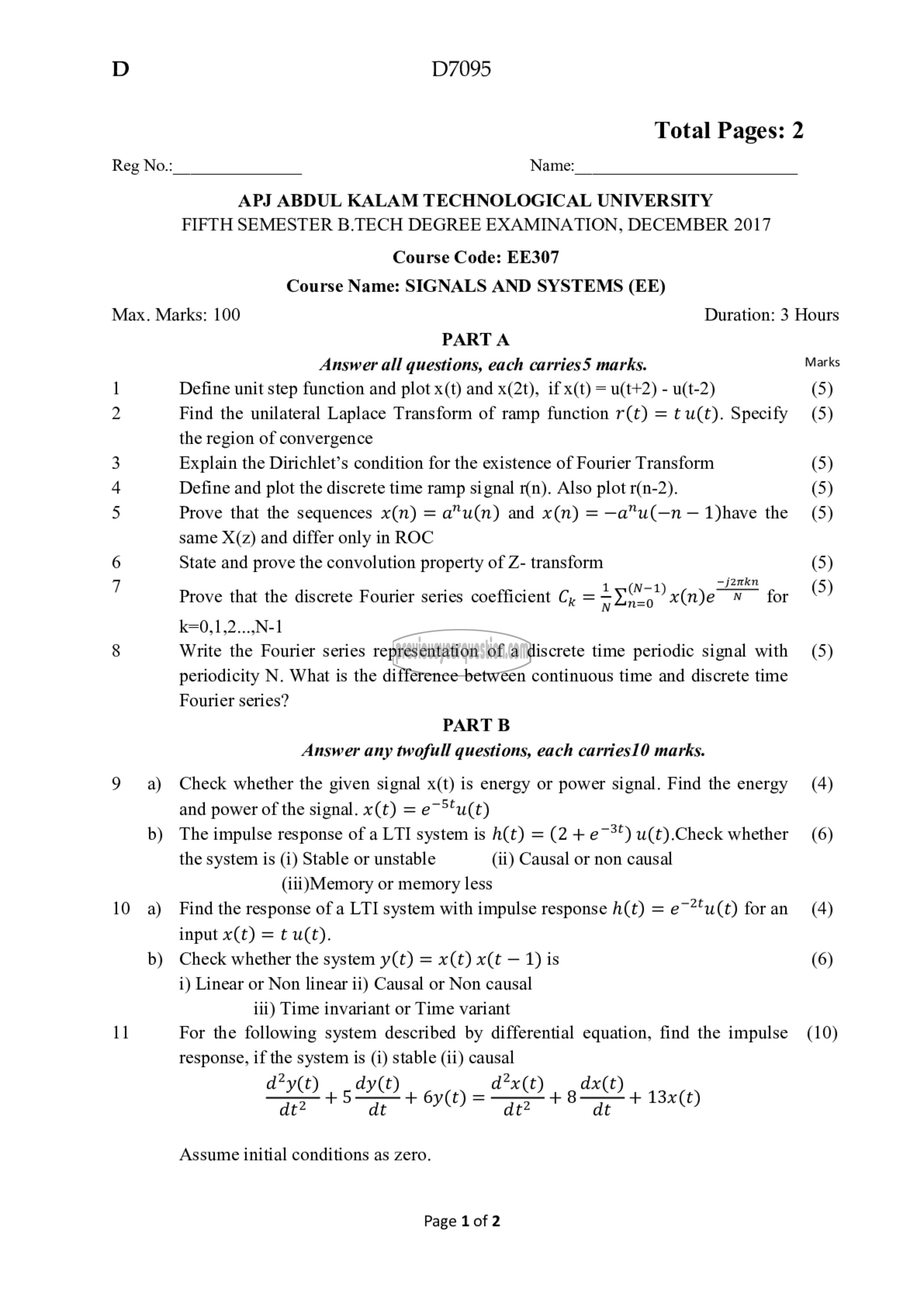APJ ABDUL KALAM TECHNOLOGICAL UNIVERSITY Previous Years Question Paper & Answer
Semester : SEMESTER 5
Subject : Signals and Systems
Year : 2017
Term : DECEMBER
Scheme : 2015 Full Time
Course Code : EE 307
Page:1
D D7095
Total Pages: 2
Reg No.: Name:
APJ ABDUL KALAM TECHNOLOGICAL UNIVERSITY
FIFTH SEMESTER B.TECH DEGREE EXAMINATION, DECEMBER 2017
Course Code: EE307
Course Name: SIGNALS AND SYSTEMS (EE)
Max. Marks: 100 Duration: 3 Hours
PART A
Answer all questions, each carries5 marks. Marks
1 Define unit step function and plot x(t) and x(2t), if x(t) = u(t+2) - u(t-2) (5)
2 Find the unilateral Laplace Transform of ramp function r(t) = tu(t). Specify (5)
the region of convergence
3 Explain the Dirichlet’s condition for the existence of Fourier Transform (5)
Define and plot the discrete time ramp signal 2൩). Also plot r(n-2). (5)
5 Prove that the sequences x(n) = a”u(n) and x(n) = —a™u(—n—1)have the (5)
same X(z) and differ only in ROC
6 State and prove the convolution property of Z- transform (5)
7 Pr ⋅ Fouri ⋅ ⋅ −−↥↻∨−↥⊃ 20 (5)
ove that the discrete Fourier series coefficient C, = ग 40४5० x(n)e 8 णि
k=0,1,2...,N-1
8 Write the Fourier series representation of a discrete time periodic signal with (5)
periodicity N. What is the difference between continuous time and discrete time
Fourier series?
PART B
Answer any twofull questions, each carries10 marks.
9 a) Check whether the given signal x(t) is energy or power signal. Find the energy (4)
and power of the signal. x(t) = e~>*u(t)
b) The impulse response of a LTI system is h(t) = (2 + € 3८) u(t).Check whether (6)
the system is (i) Stable or unstable (ii) Causal or non causal
(iii)Memory or memory less
10 a) Find the response of a LTI system with impulse response h(t) = e~2°u(t) foran (4)
input x(t) = t u(t).
b) Check whether the system y(t) = x(t) x(t — 1) is (6)
i) Linear or Non linear ii) Causal or Non causal
iii) Time invariant or Time variant
11 For the following system described by differential equation, find the impulse (10)
response, if the system is (i) stable (ii) causal
dy(t) dy(t) d?x(t) dx(t)
ಸ್ + + 6y(t) = 012 +8 at + 13x(t)
Assume initial conditions as zero.
Page 1 of 2
